With instruments ranging from vocals to a decorated accordion, New York City subway performers bring culture and life to the monotony of the everyday commute.
Dagen Julty, for instance, is Lovejoy the Clown by day and an occasional Times Square subway performer by night. His attire was welcoming, featuring a fuzzy rainbow sweater and a generally eccentric aura. Julty was full of smiles and emanated positivity and good vibes.
“I started performing when I started entertaining kids and babies in 1996,” Julty said. “I was a school music teacher and someone said, ‘Try being a kid entertainer’ … and I gave it a try.”
Julty has been involved with music for as long as he can remember. Sharing his upbeat tunes has been his way of preserving bliss within society. “Especially now with the phones, I think it’s so important that people do things in 3D,” he said.
Julty said that he does not currently live in the Big Apple. He traveled from upstate, about two hours away, to come perform underneath New York City.
His recent endeavor is an experiment, and only now has he started asking for money. Before, he would choose a spot in the subway and begin performing and just go for it. “Most people would ignore,” Julty said. “Some would take an interest.”
Julty has always been drawn to music.
“I’ve always had bands. I’ve always had music. I’ve always been experimental … I was one of those people brought up in a creative home with a creative license,” he said.
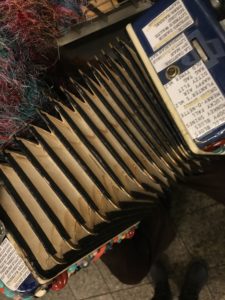
From what it seems, Julty, who is in his mid 60s, is always going to be a musical man. He will not stop performing with his trusty 22-year-old accordion, donned with colorful jewels and shiny beads.
But it isn’t just solo artists below the surface; there are group performances as well. One group, ranging from ages 14 to 16, Songs of Solomon, sings modern pop songs below Times Square in order to raise money for a convention in August.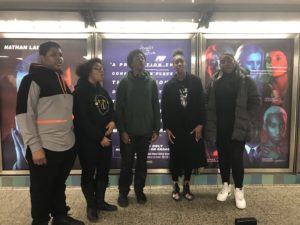
The group consists of Alex Harper, Crystal Barkie, Jordan Banfield, Arkingel Vasselo and Regane Howard. They attend Wadleigh Secondary School for the Performing and Visual Arts and have been performing to raise money for about a month.
Generally, they have been getting good responses, but there have been a few exceptions.
“There was a group of kids that came over here that started dancing, and then they like, threw their food on the ground and they kicked it towards us,” Harper said.
The students believe that there is a stigma amongst street performers — that they are typically poor or homeless. That is often not the case, so they made a sign in order to show why they were singing.
“We wrote a sign that told people like, what we were raising money for,” Barkie said. “And the same day we made the sign, we raised $200 … People start seeing it, and then [they] start donating more money.”
Contrastingly, some perform for the sake of religion. One group, who often sets up in Grand Central Station, made music on behalf of the International Society for Krishna Consciousness. They make music with instruments such as drums, harmoniums, and finger cymbals to produce a spiritual ambiance within the station.
Group members will approach passersby with promotional books and pamphlets, attempting to raise money for the monastery.
“This is not exactly musicians in a subway,” Mahot Sahah Das, a member of the Bhakti Center monastery, said. “It’s not a performance; it’s basically a form of worship and a form of sacrifice.”
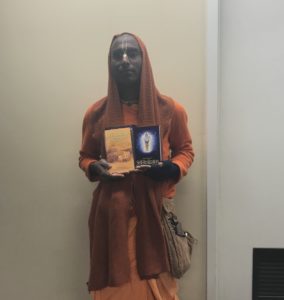
“It’s the mantra we chant over and over again . . . it’s a spiritual sound that doesn’t get exhausted,” he said. “[It] gives you access to the most personal form of God, so you can actually have a loving reciprocation with it.”
“Most people, they sort of have belief in God, but they don’t have any information of who God really is,” Sahah Das said. “How will you love someone if you don’t know them?”
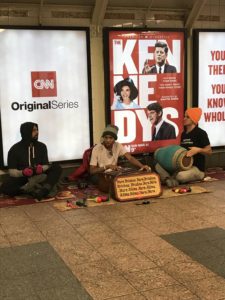
In the New York City subways, performers generally have artistic freedom, with only a few small rules.
According to transit officer Tahir, who did not provide a first name, artists only need a permit when using loud speakers and amplifiers, and they can only do so in common areas. They can not interfere with the loud speaker announcements or perform on the trains, but acoustic performances are allowed on subway platforms.

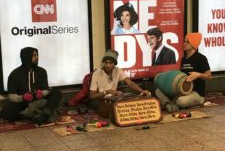

One thought on “Below the streets, above expectations: performers share talents for donations, bring life to public transportation”